The National Ignition Facility (NIF) at Lawrence Livermore National Lab (LLNL) made worldwide news when they reached nuclear fusion ignition in December 2022 but they went beyond that result on July 30, 2023.
I am attending the 2023 International Conference on Inertial Fusion Sciences and Applications where there have been numerous presentations by leaders of the LLNL NIF team. I have also spoken with several of the speakers.
The Big 3 recent results were:
1. Aug 8, 2021 1.9 megajoules (MJ) of laser power was fired at a target which resulted in the release of 1.35 megajoules (0.72 return)
2. Dec 5, 2022 2.05 megajoules was fired at a target which resulted in the release of 3.15 megajoules (1.54X gain)
3. July 30, 2023 2.05 megajoules was fired at a target which resulted in the release of 3.88 megajoules (1.9X gain)

After Aug 8, 2021 there were several shots that did not reach a megajoule of returned power. There was a lot of work improving the targets and adjusting how the lasers were fired. The power of the entire system was increased by 8% from 1.9 MJ to 2.05 MJ. The quality of the targets had to be improved. They had to prevent three different major kinds of errors.
Keeping the system working at 2.05MJ or even 1.9MJ is difficult. The system is operating beyond its designed levels of 1.8MJ. The NIF system has damage that has to be repaired after shots are made.
There is software autotuning to calculate the adjustments to the laser pulse the target (holhraum).

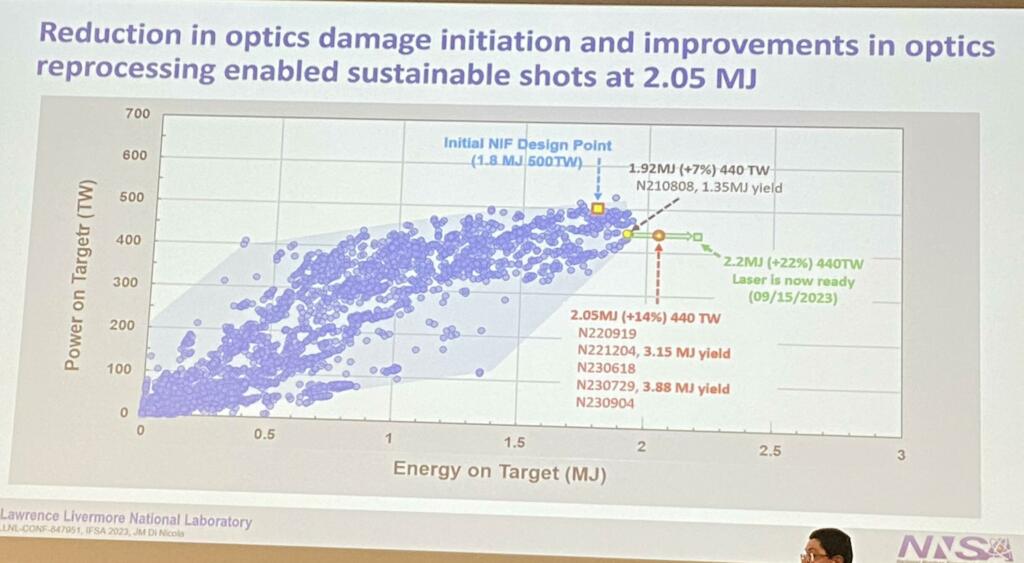
There are plans to increase the power to 3 MJ which would conservatively deliver more than a 10X gain and 30 MJ.
They have already prepared the NIF lasers and facility to operate with 2.2 MJ shots. The first 2.2 MJ shot are calculated to deliver 5-10 MJ. Modifying the target shape from a pill capsule like shape to one with a wide centerline with two stacked trapezoids (Frustraum) could deliver over 10 MJ using 2.2 MJ of laser power.

Tests have been made that indicate the current system could reach 2.6 MJ with fresh amplifier glass lens. NIF has bought and stored all of the original production of amplifier glass. The 2.6 MJ (and any midpoint between 2.2 MJ and 3MJ) has not been funded or approved. However, it would offer a lot of fusion bang for the buck to go to 2.6 MJ and then to make the modifications for 3 MJ. Timing and schedules are all highly uncertain but 2 years at 2.2MJ and then 2 years of testing at 2.6MJ makes sense to me. A
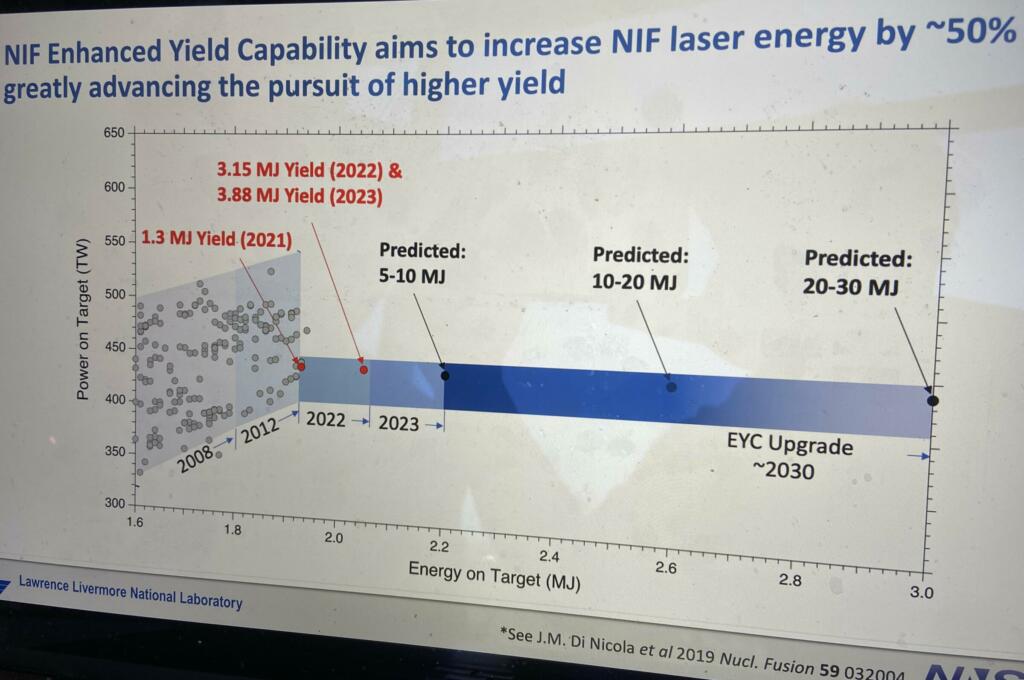


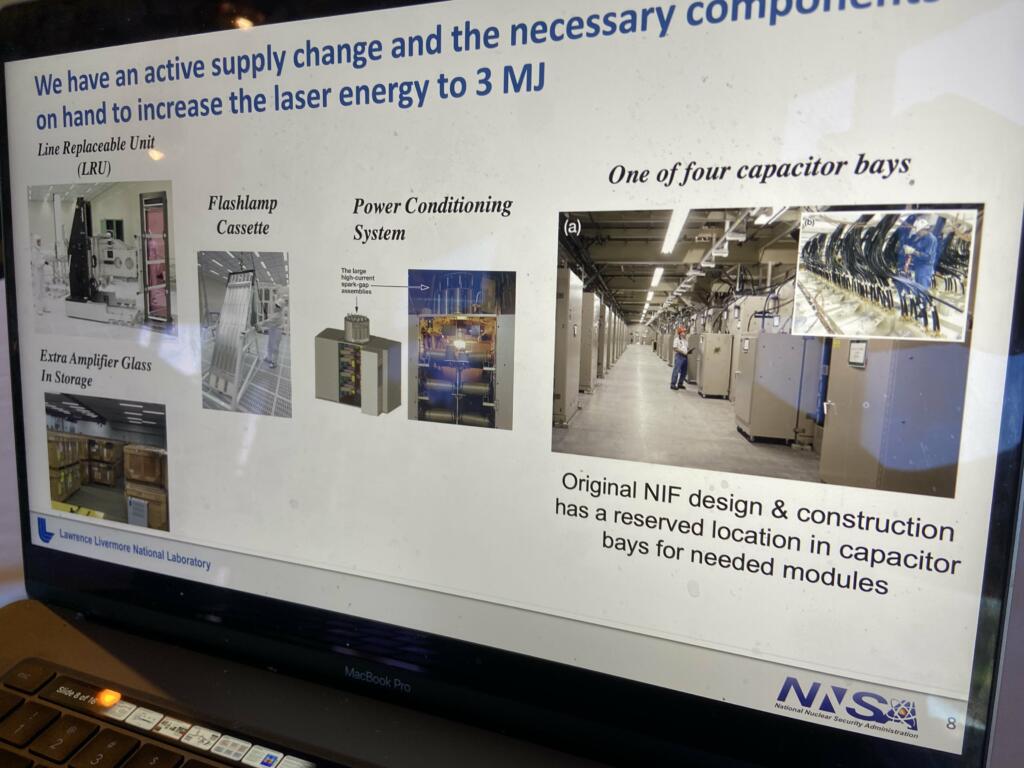

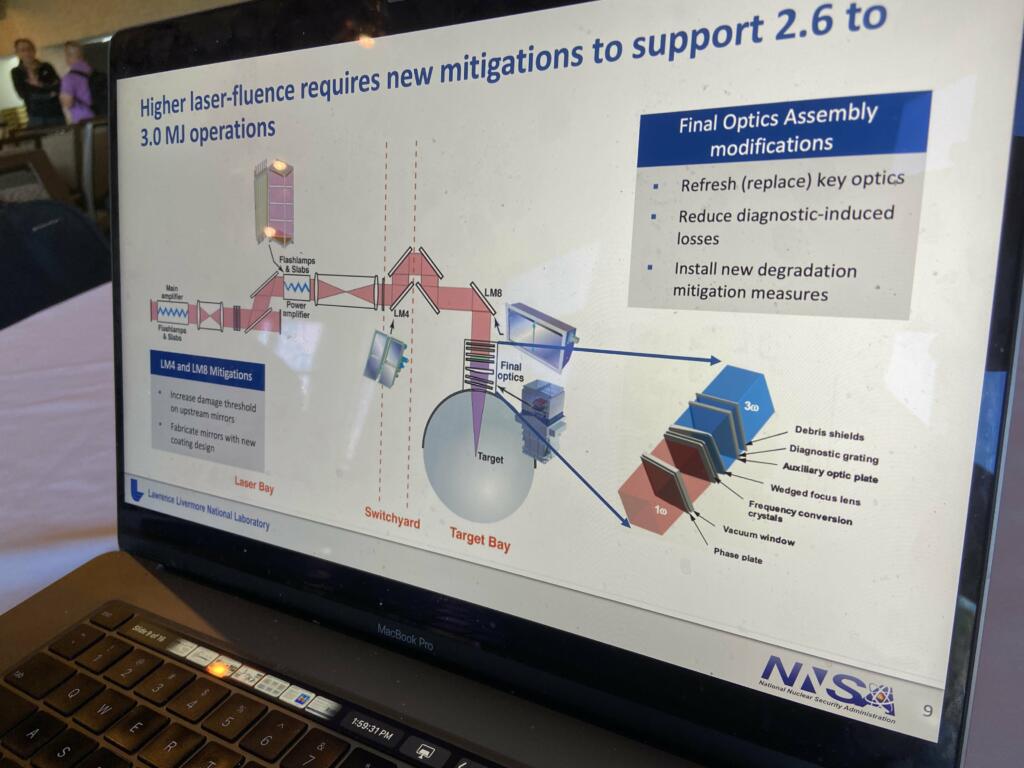
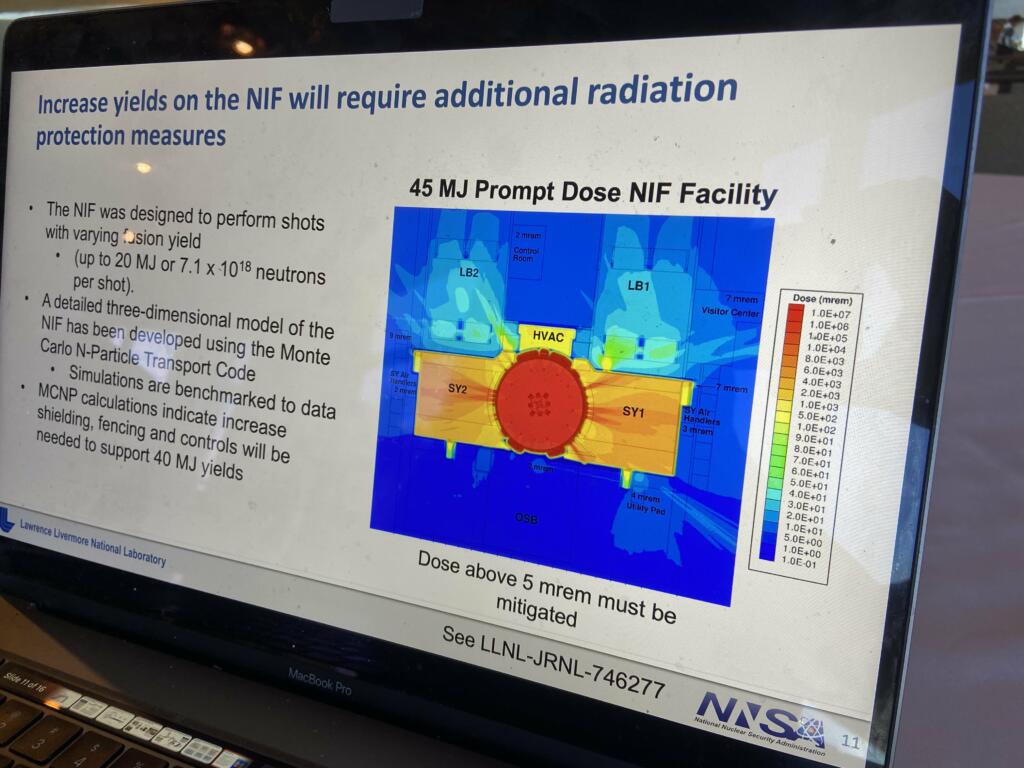
There is still selections and approvals to be made on how to perform higher power or high energy work.
The National Nuclear Security Administration (NNSA) makes the decisions about LLNL operations. Since its inception in 1952, LLNL’s defining responsibility has been national security — ensuring the safety, security and effectiveness of the nation’s nuclear stockpile. Nuclear Stockpile sustainment is still the main role.
LLNL’s mission has broadened in recent years, as dangers ranging from nuclear proliferation and terrorism to cyber-attacks and climate change increasingly threaten national security and global stability.
LLNL developing and proving that laser nuclear fusion is promising for potential commercial energy generation is greatly appreciated.
Future of NIF Laser Fusiom
I think that the campaigns to increase NIF power to 2.6 MJ and to 3 MJ makes a lot of sense.
It could also achieve 10-20MJ or more at 2.6MJ and 30+MJ with 3 MJ at NIF.
4-5X gain could be shown at 2.2MJ (2023-2025)
5-8X gain could be shown at 2.6MJ (est 2025-2027) and
over 10X gain could be shown at 3MJ (est around 2030).
The gain estimates could be very conservative if the science continues to improve targets. The target and other design plans are already being analyzed and prepared.
IF the improvements are as good as might be possible then 2.6 MJ could deliver 10-12X gain and 3MJ might give 20-30X gain. All of the estimates are theoretical. However, all of this would be years of hard work by hundreds of people. There have been many advancements and failed attempts. Ignition took ten years longer than was originally planned.
IF the results over-deliver designs and expectations, NIF cannot proceed past 120 MJ of returned power. There would be too much radiation and the facility would have to be completely changed.



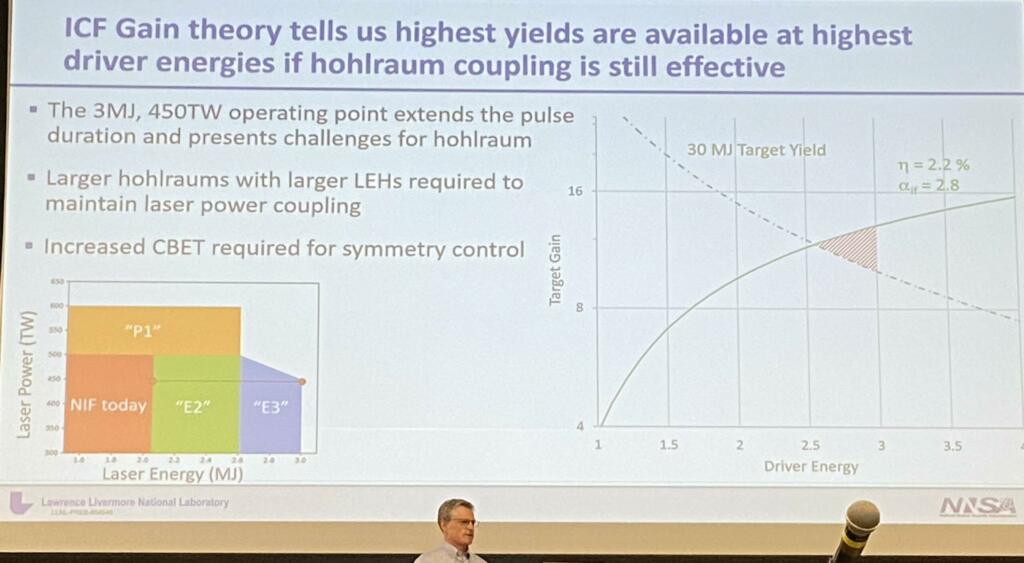

Brian Wang is a Futurist Thought Leader and a popular Science blogger with 1 million readers per month. His blog Nextbigfuture.com is ranked #1 Science News Blog. It covers many disruptive technology and trends including Space, Robotics, Artificial Intelligence, Medicine, Anti-aging Biotechnology, and Nanotechnology.
Known for identifying cutting edge technologies, he is currently a Co-Founder of a startup and fundraiser for high potential early-stage companies. He is the Head of Research for Allocations for deep technology investments and an Angel Investor at Space Angels.
A frequent speaker at corporations, he has been a TEDx speaker, a Singularity University speaker and guest at numerous interviews for radio and podcasts. He is open to public speaking and advising engagements.

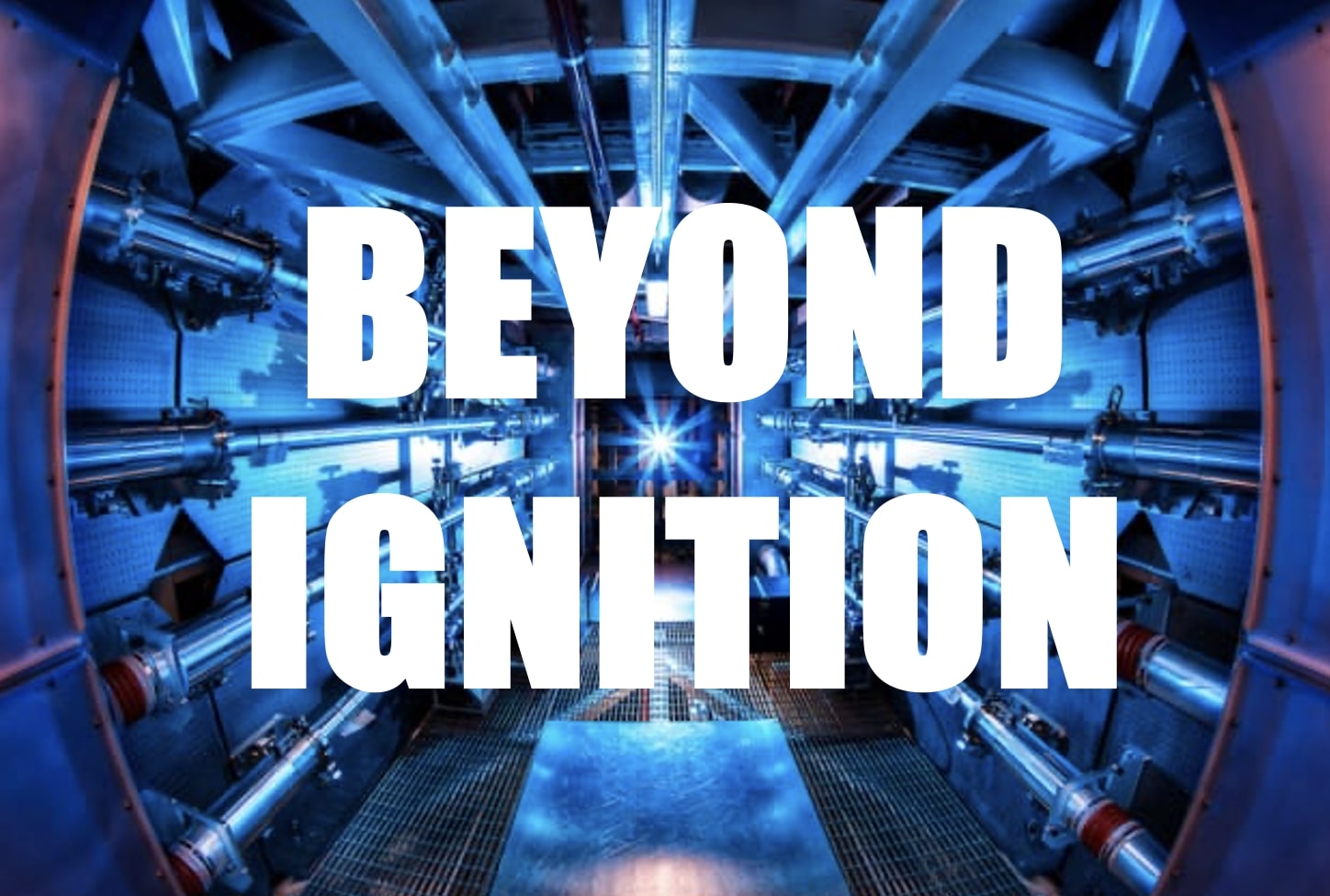
Instead of more powerful
Lasers, maybe make the target easy to be affected by the laser. Just thinking.
This 10x gain compared to laser input power? Because that is very different than 10x gain compared to total input power which is what they did last time. So they are still a very long way away from actual net energy.
The science is good. The powerplant not so much.
Laser is becoming more and more powerful. Laser fusion is only a matter of time.
Every article swells my pride to higher levels. I was a primary welder for one of the companies that constructed the NIF facility. It’s success is my personal validation for a life of well lived & useful. Hopefully my children & grandkids will enjoy energy generated by this tech.
10 times gain, if there are quick repeats, would be great
Are they looking at devloping a power station design or is this just pure science at this stage?
It’s still way back in the science stage, NIF was never intended as a power plant demonstrator. It was more a simulator so hydrogen bombs can still be designed and built but not openly tested. Now, it’s finding quite a bit of use as a proof of concept that fusion power can be viable, but it’s still definitely no where near a plant design. Look more at Tokamak Energy and similar for that.
I think that only a fraction(one or few percentages) of fuel ignites in the capsule. If they can get more fusions reaction going that will increase yield.